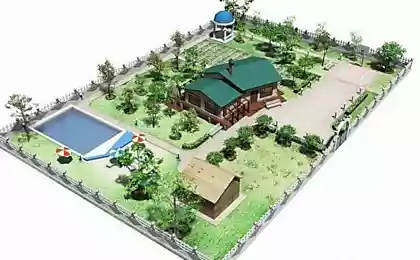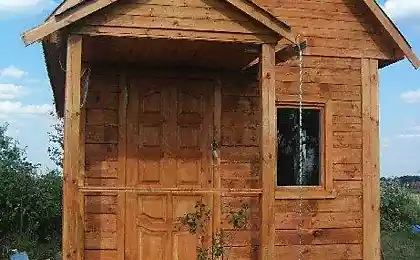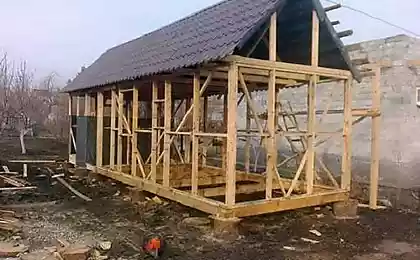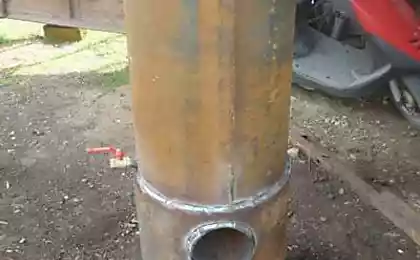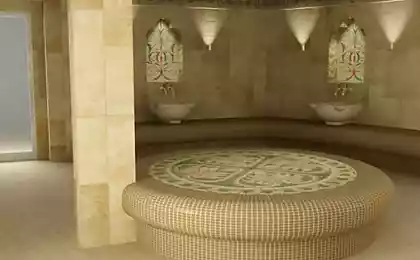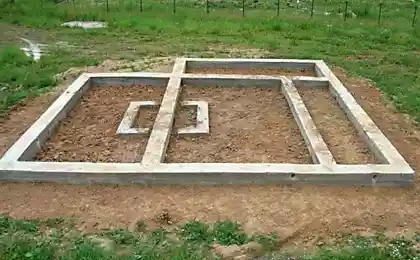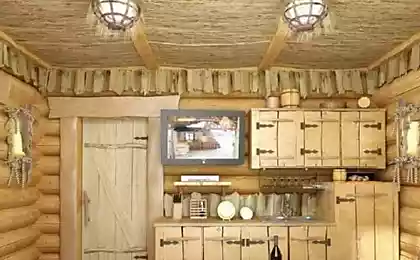564
Bathhouses
Russian
The popularity of the Russian bath is great, not only in their homeland, but also in other countries. Technically, it is a small room of the logs from the brick oven, stove inside. The stones, which are placed inside, heated to 600-700 ° C, and then doused with water to produce steam. In combination with spruce, birch, fir twigs hot steam has a positive effect on the human body, inside the steam room. Russian baths have always occupied a special place in the culture of hygiene Slavs and were loved, and completely accessible to all classes.
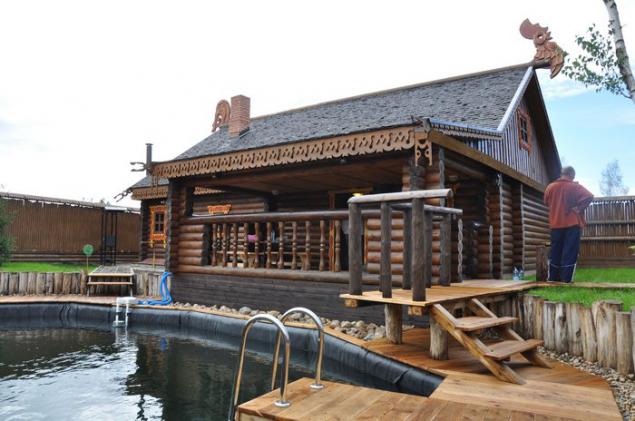
Roman (term)
Compared with the Russian bath Roman Baths is a complex of buildings. Modern Roman baths virtually indistinguishable from the antique, which were heated by warm air supplied through pipes from bronze brazier. Separately, there is a dressing room, the room with the pool filled with warm, hot and cool water. Previously, they were only available to the noble citizens of ancient Rome, but later opened to the public.

Turkish bath (hammam)
The prototype of the hammam is considered Roman Baths. It looks about the same, but there are only two areas with swimming pools, one for men, another - for women. Inputs and changing them is also different. The walls are stone laid in the hammam, and the seats are made of marble. Bathroom with heated swimming pool with a large tightly closed pot filled with water. When the water in it begins to boil, steam escapes through the holes and heats the room. In Turkey, the decoration of baths have always paid a lot of attention, and their visit was a must for all.

Japanese (furo)
Japanese baths, as well as many in this country, seriously different from what we are accustomed. Furo is a small swimming pool, a large wooden barrel filled with water and herbal infusions or essential oils, temperature of 35-40 ° C.. In the indoor air is heated to 40-50 ° C. Man is placed in the water so that the area of the heart is above its surface. There furo that uses heated to 50 ° C sawdust providing truly healing effect on the body.
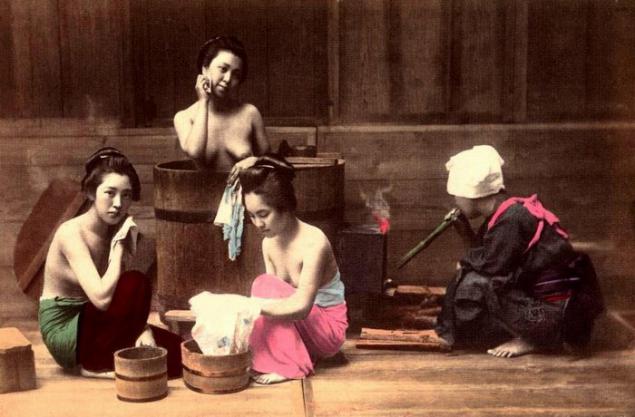
©
The popularity of the Russian bath is great, not only in their homeland, but also in other countries. Technically, it is a small room of the logs from the brick oven, stove inside. The stones, which are placed inside, heated to 600-700 ° C, and then doused with water to produce steam. In combination with spruce, birch, fir twigs hot steam has a positive effect on the human body, inside the steam room. Russian baths have always occupied a special place in the culture of hygiene Slavs and were loved, and completely accessible to all classes.

Roman (term)
Compared with the Russian bath Roman Baths is a complex of buildings. Modern Roman baths virtually indistinguishable from the antique, which were heated by warm air supplied through pipes from bronze brazier. Separately, there is a dressing room, the room with the pool filled with warm, hot and cool water. Previously, they were only available to the noble citizens of ancient Rome, but later opened to the public.

Turkish bath (hammam)
The prototype of the hammam is considered Roman Baths. It looks about the same, but there are only two areas with swimming pools, one for men, another - for women. Inputs and changing them is also different. The walls are stone laid in the hammam, and the seats are made of marble. Bathroom with heated swimming pool with a large tightly closed pot filled with water. When the water in it begins to boil, steam escapes through the holes and heats the room. In Turkey, the decoration of baths have always paid a lot of attention, and their visit was a must for all.

Japanese (furo)
Japanese baths, as well as many in this country, seriously different from what we are accustomed. Furo is a small swimming pool, a large wooden barrel filled with water and herbal infusions or essential oils, temperature of 35-40 ° C.. In the indoor air is heated to 40-50 ° C. Man is placed in the water so that the area of the heart is above its surface. There furo that uses heated to 50 ° C sawdust providing truly healing effect on the body.

©



